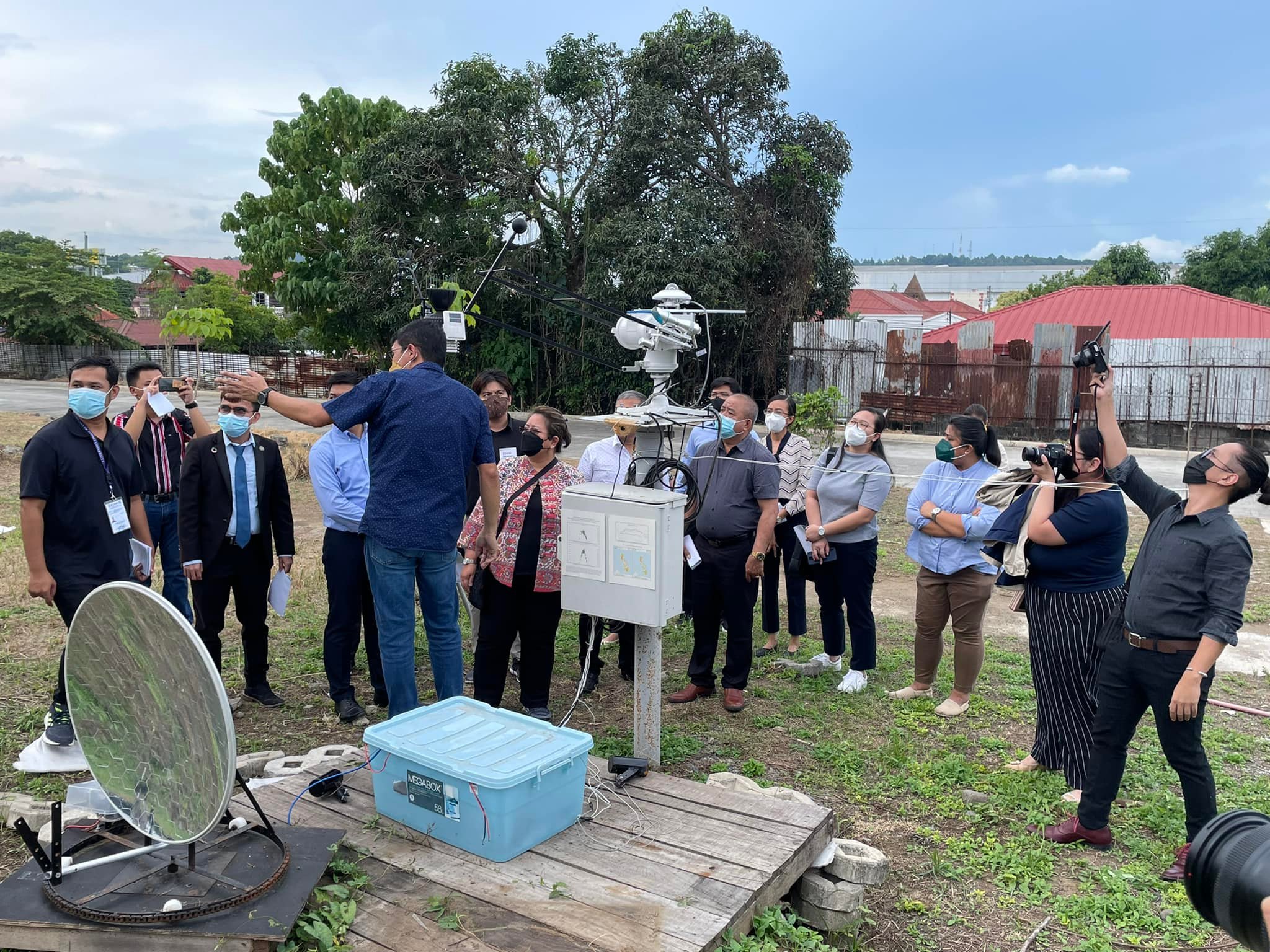
Mindanao Renewable Energy Center (MREC), Ateneo de Davao University, Davao City
A Brief Description of the MREC CSP Project by Engr. Renyl B. Barroca, Ph.D.
(Assistant Dean, Ateneo de Davao University – School of Engineering and Architecture)
The utilization of solar energy technology has been growing at a very fast pace all over the world. Aside from being a pollution-free source of abundant power, solar technology generates power near the load centers, eliminating the need to run high voltage transmission lines through rural and urban landscapes. However, concentrating solar power (CSP) technology has not yet been fully utilized for power generation purposes, especially in developing countries, compared to the photovoltaic system. With this, the Mindanao Renewable Energy Center (MREC) of AdDU sought funding support from DOST-PCIEERD to develop a first-ever CSP system utilizing parabolic dish concentrators in the country. The project aims to design, develop, and investigate a working CSP system for electricity generation and heating purposes. The MREC implements the project for a period of 24 months at the AdDU, Bangkal Campus, Davao City. The prototype will demonstrate how optimum energy conversion efficiency of each component installed can be achieved. Resource assessment in the study area and direct normal irradiance (DNI) validation are also included.
CSP system is a solar-thermal technology that converts energy from the sun into thermal energy through solar collectors. The photons generate atomic vibrations (phonons), producing thermal energy collected using heat transfer fluids. In short, it directly converts solar energy to thermal energy for electric generation and other process heating purposes. The solar energy collected by a solar field-collector serves as the fuel to generate steam in the boiler. The thermal energy of the steam will be converted to mechanical energy as it strikes the turbine blades. This steam turbine is directly coupled to an electric generator to produce electricity. More so, the thermal power plant’s instrumentation and control system play a critical role in achieving the plant’s efficient, economical, and safe operation. The system utilizes steam condition monitoring applications that directly calculate, store, and display the steam’s performance parameters. These parameters will then be used to indicate each component of the steam power plants’ operating efficiency.
Brief Technical Description
The concentrated solar power (CSP) facility utilizes a parabolic dish solar (PDS) concentrator system that consists of more or less a thousand hexagonal-shaped facets made of thin-film silver reflectors. Each facet is constructed using a swivel and ball joint mechanism to adjust the concentration ratio. To address the availability locally, the team decided to use an adjustable swivel joint of shower heads made of plastic materials. Since the system is installed outdoors, the base structure is made of structural steel materials to withstand the weather conditions on-site. For the automatic tracking mechanism, an electric motor drives the ring-roller mechanism at the base, which serves as a pivot. Also, to control the titling actions of the dish, the design utilizes a power screw mechanism. The reflected solar radiation is concentrated into and collected by the cavity-type receiver. The solar energy collected will then be converted into thermal energy for heating and generating electricity. As the heat transfer fluid, thermic oil transports the thermal energy into the oil-to-steam heat exchanger (O/W H.E.). The heat exchanger serves as the boiler of the 7.5 kVA steam turbine-generator unit. The system also utilizes an oil-to-salt heat exchanger (O/S H.E.) for the thermal energy storage (TES) system.
